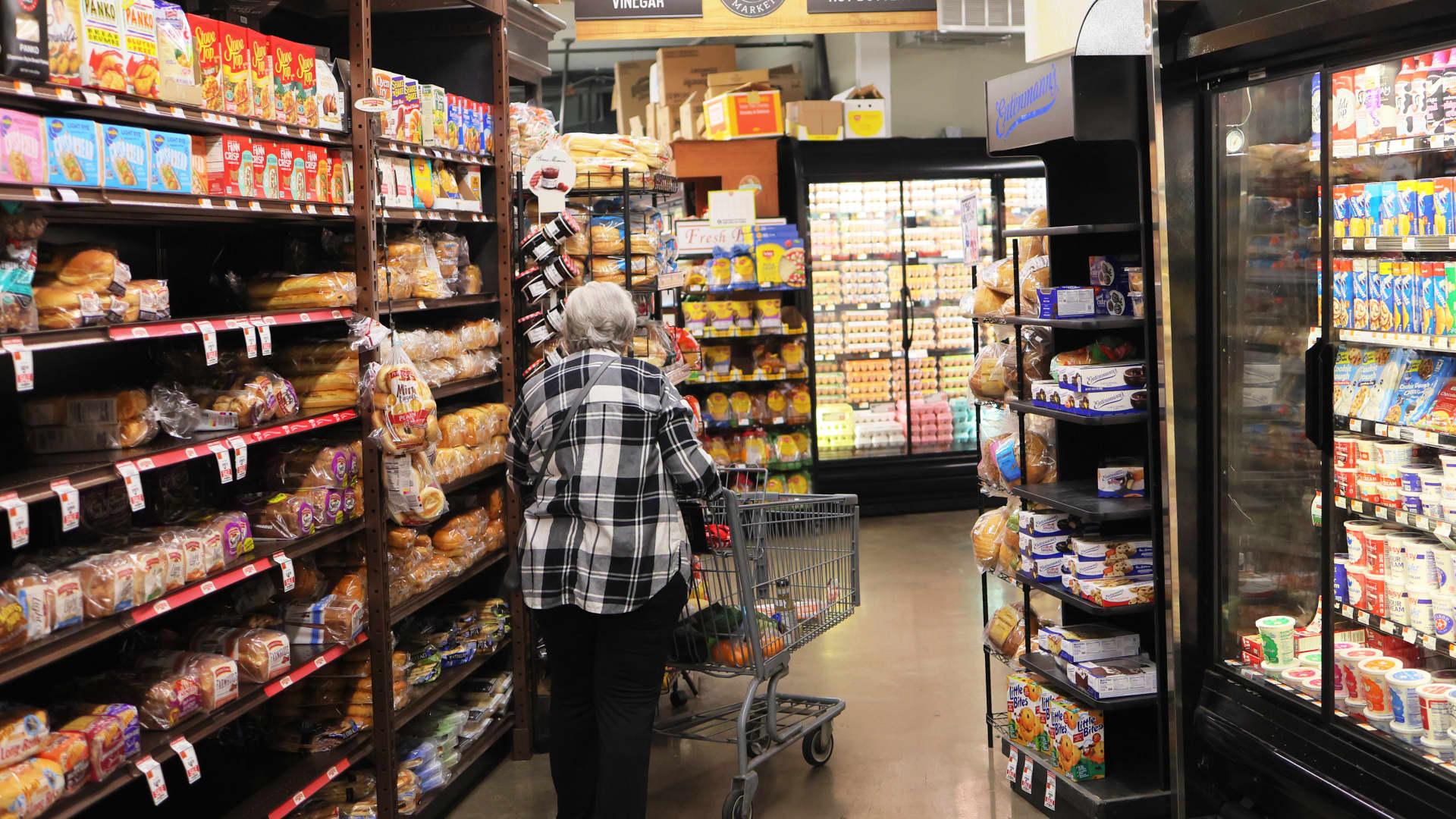Canada’s productivity ’emergency’ and the role newcomers play

Labour productivity increased just once in past seven quarters

Article content
Ever since the federal government announced its decision to place caps on temporary residents, economists have been talking about how the move could potentially compel businesses to invest more on technology instead of relying on “cheap labour” from abroad, which in the long run should help boost Canada’s struggling productivity rate.
Concerns around productivity received even more attention last week after Bank of Canada senior deputy governor Carolyn Rogers said the country needs to tackle its poor efficiency numbers to inoculate the economy against future inflation.
Advertisement 2
Story continues below
Article content
Article content
“You’ve seen those signs that say: In emergency, break glass — well, it’s time to break the glass,” she said in a speech on March 26.
The number of immigrants isn’t the only factor that influences productivity, but it’s important to understand its impact considering Canada’s population grew at a record pace during the past two years — primarily due to temporary residents — by adding more than two million people.
What exactly is productivity?
Statistics Canada defines labour productivity as a measure of the country’s gross domestic product (GDP) per hour worked. GDP measures the value of goods and services produced during a specific time frame.
But other metrics are also used. For example, some economists define productivity as GDP per capita, which divides the GDP figure by the country’s total population. Some say that this is a better metric since the number of hours worked can be artificially distorted due to strikes.

Regardless of the formula used, the results have been poor. Canada’s labour productivity increased just once in the past seven quarters, while its GDP per capita has declined in five of the past six quarters.
Article content
Advertisement 3
Story continues below
Article content
But declining productivity isn’t a new phenomenon. As Rogers said, Canada’s productivity has fallen from a “not great” record of producing 88 per cent of the value generated by the United States economy per hour in 1984 to just 71 per cent in 2022.
Weak investment has been a problem in Canada for the past 50 years, but the gap between the level of capital spending per worker by Canadian companies and the level spent by their U.S. counterparts has become worse over the past decade or so.
What role do newcomers play?
Akin to Canadian-born people, newcomers’ contribution to the economy depends upon the value they add. While the relationship isn’t simple, one way this can be measured is by analyzing their earnings. If newcomers earn more than the average Canadian income, they are more likely to be making a positive contribution to productivity. But if they are concentrated in low-wage job sectors, they are more likely to reduce labour productivity.
A Statistics Canada report released last week assessed how the role of newcomers changed between 2001 and 2021 and said there has been a large increase in the number of immigrants working in “professional jobs,” or jobs that require a bachelor’s degree or higher, compared to Canadian-born residents.
Advertisement 4
Story continues below
Article content
But it also said that while more Canadian-born workers moved away from low-skilled jobs in those 20 years, the role of immigrant workers in those occupations has increased. To some extent, newcomers “backfilled Canadian-born workers” at the low-skilled job level, Feng Hou, one of the report’s authors, said.
“If immigrant workers continue to be employed in large and increasing numbers in lower-skilled occupations that are experiencing declining employment levels, their future economic prospects may be negatively affected as such jobs continue to disappear,” the report said. “If this trend continues, it will also affect immigrant workers’ contribution to economic growth.”

The findings of the paper reemphasize an important nuance: newcomers are increasingly picking up jobs in the low-wage sector, but they have also increased their presence at the upper end of the job spectrum.
The balance, though, seemed to change after 2021 when Canada began allowing many more newcomers as it recovered from the pandemic in 2022 and the job vacancy rate reached record-low levels. As such, the government allowed businesses to hire more workers from abroad, paving the way for record population growth in both 2022 and 2023 when Canada added more than a million newcomers each year.
Advertisement 5
Story continues below
Article content
This was significantly more than the number of immigrants or permanent residents that Canada aims to bring in each year — around 500,000 — and led economists and think tanks to question the government on how it plans to accommodate the newcomers amidst rising prices and a housing crisis.
Prime Minister Justin Trudeau’s government recently limited the number of temporary residents entering Canada to five per cent of the overall population over the next three years, compared to the existing 6.2 per cent, or 2.5 million students, foreign workers and asylum seekers.
What are businesses saying?
Economists have lauded the cap as a positive move towards tackling productivity issues and housing shortages, but businesses are worried it could unfairly penalize some industries that are already facing labour shortages and rely on newcomers to fill them.
The Canadian Chamber of Commerce, one of the country’s largest business groups, last week said sectors such as agriculture, tourism and restaurants are concerned they may be hit.
“We have some sectors of our economy that even before the pandemic faced chronic labour shortages and in some cases the pandemic made it worse. We haven’t recovered from that,” the association’s senior director Diana Palmerin-Velasco said.
Advertisement 6
Story continues below
Article content
We haven’t recovered
Diana Palmerin-Velasco
However, economists such as Royal Bank of Canada’s Robert Hogue downplayed the impact and said that while businesses in some sectors may face challenges as a result of the cap, the number of unemployed people in Canada is rising and the labour pressure isn’t as acute as it used to be.
Palmerin-Velasco also questioned the productivity argument, saying these issues have been hurting Canada for a “long, long time,” and that people need to be careful before blaming newcomers for “every issue” the country faces.
What’s the solution?
Broadly speaking, most economists have stressed the need to create a better environment for business investment and an immigration system that focuses more on bringing high-skilled newcomers who can multiply Canada’s economic value.
Rogers proposed Canada invest more in industries that already generate the most output per hour worked, such as mining and oil and gas. Improving workers’ skills, increasing competition and reducing excessive regulation are some other areas that have been talked about.

Bank of Nova Scotia economist Rebekah Young, in an analysis released on March 21, said Canadian immigration policies need a reset, instead of a quick fix. She provided two theoretical scenarios in which productivity would have remained flat instead of declining in the past two years.
Advertisement 7
Story continues below
Article content
The first was to restrict annual population growth to 350,000, instead of a million-plus. The second would be to increase business investment by a rare 15 per cent, which would equip people with the necessary tools to increase efficiency.
Young added that while the decline in simple average productivity per capita is sharp, it isn’t broadly based and most Canadian households are still better off today compared to pre-pandemic levels. It’s mostly the newcomers filling low-wage positions who are getting the “immediate short end of the stick” through skills-job mismatches, wage gaps and the high costs of finding a place to live, she said.
Avery Shenfeld, chief economist at CIBC Capital Markets, said it’s time to take a fresh look at the facts to cure the “underlying disease.” In a note last week, he said Statistics Canada, with its “firm-level data,” needs to take the lead.
“Are lower-cost, less-skilled temporary foreign workers undercutting Canada’s output per hour, or incenting business to spend less on labour-saving technology? Adding immigrants with lower output per hour might not be a negative for the output per hour of those already here, even if it dilutes the average,” he said.
Recommended from Editorial
“Given our heavy reliance on immigration to counter the drag of an aging population, this is another area where hard facts, not guesswork, are needed.”
• Email: [email protected]
Bookmark our website and support our journalism: Don’t miss the business news you need to know — add financialpost.com to your bookmarks and sign up for our newsletters here.
Article content








Comments